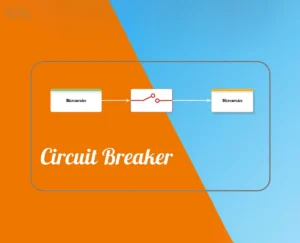Introduction
In 2025, cloud-native development has become indispensable for businesses aiming to build scalable apps that can rapidly adapt to evolving market demands. The shift from traditional monolithic systems to cloud-optimized architectures enables organizations to innovate faster, deploy continuously, and maintain resilient operations in a highly competitive landscape. Leveraging a combination of microservices architecture, containerization, Kubernetes orchestration, and serverless computing, developers can design applications that scale seamlessly and respond dynamically to user needs. This comprehensive guide explores the latest trends, tools, and advanced tactics shaping cloud-native development in 2025. It also highlights how Amquest Education’s Software Engineering, Agentic AI and Generative AI Course equips professionals with the practical skills and AI-driven insights needed to excel in this transformative domain.
The Evolution of Cloud-Native Development
Cloud-native development emerged as a response to the limitations of monolithic applications running on traditional infrastructure. Initially, organizations migrated existing apps to the cloud with minimal changes, often resulting in inefficiencies and scaling challenges. The paradigm shifted with the adoption of microservices architecture, which decomposes applications into independently deployable services. This modularity enhances agility, fault isolation, and scalability. Technologies like Docker containers standardized packaging, enabling consistent deployment across environments. Kubernetes revolutionized container orchestration by automating deployment, scaling, and management at scale. Simultaneously, serverless computing introduced event-driven, function-as-a-service models that abstract infrastructure management, allowing automatic scaling and cost efficiency. Alongside these technical advances, cultural shifts toward DevOps and agile methodologies foster collaboration and continuous delivery. Today, cloud-native development integrates architecture, tooling, culture, and security practices designed to unlock cloud potential fully.
Key Features and Trends in 2025
Microservices Architecture and Containerization
Microservices remain the backbone of cloud-native apps, empowering teams to develop, deploy, and scale components independently. Containers provide lightweight, portable environments that simplify management.
- Kubernetes leads as the orchestration platform, extending its capabilities to support multi-cloud and hybrid-cloud deployments.
- Advanced container runtimes and service meshes enhance networking, security, and observability within microservices ecosystems.
Serverless Computing Meets Edge Integration
Serverless platforms let developers focus on business logic without managing infrastructure. In 2025, serverless tightly integrates with edge computing to reduce latency by processing data closer to users or IoT devices.
- Frameworks like KubeEdge and OpenYurt extend Kubernetes clusters to edge devices, enabling hybrid cloud-edge architectures.
- This synergy is critical for real-time AI inference, AR/VR, and latency-sensitive IoT applications.
GitOps and Declarative Infrastructure
GitOps has become the de facto standard for managing cloud-native infrastructure. Using Git repositories as the single source of truth, it enables declarative configuration, automated deployments, and safe rollbacks.
- Tools like ArgoCD and Flux streamline GitOps workflows, ensuring reproducibility and auditability.
- Infrastructure as Code (IaC) practices guarantee consistent environments and compliance.
Enhanced Security Posture
Security in cloud-native ecosystems advances with:
- Zero Trust Security models enforcing strict identity verification within Kubernetes clusters.
- Runtime Security Monitoring tools analyzing container behavior to detect anomalies in real time.
- Policy enforcement via Open Policy Agent (OPA) integrated with Kubernetes to prevent misconfigurations.
- Supply chain security tools like in-toto and COSIGN validate container image integrity before deployment.
- Embedding security into CI/CD pipelines ensures vulnerabilities are identified and mitigated early (shift-left security).
Advanced Tactics for Cloud-Native Success
Automate Release Pipelines with CI/CD Integration
Automating build, test, and deployment pipelines accelerates delivery and reduces errors. Incorporating security scanning and compliance checks early in the pipeline (shift-left security) is essential.
- Automated rollback mechanisms minimize downtime during failures and improve reliability.
Observability and Resilience Engineering
Robust monitoring and observability are critical for maintaining system health and diagnosing issues rapidly.
- Employ distributed tracing, metrics, and logs using tools like Prometheus and Jaeger.
- Build fault tolerance with retries, circuit breakers, and graceful degradation strategies.
- Integrate chaos engineering to proactively test failure scenarios, ensuring system resilience.
Multi-Cloud and Hybrid Cloud Strategies
To avoid vendor lock-in and enhance availability, organizations implement multi-cloud or hybrid cloud architectures.
- Kubernetes supports federated clusters spanning multiple clouds.
- Cloud-native apps must be designed for portability and consistent security policies across diverse environments.
AI and Cloud-Native Synergy
Integrating AI capabilities into cloud-native environments enhances automation, observability, and decision-making.
- AI-driven anomaly detection improves runtime security monitoring.
- Generative AI can automate code generation and testing within CI/CD pipelines.
- Agentic AI enables intelligent orchestration and resource optimization at scale.
Overcoming Challenges in Cloud-Native Development
Despite its advantages, cloud-native adoption poses challenges such as complexity in managing distributed systems, security risks, and skills shortages. Successful teams:
- Invest in training and continuous learning, fostering a DevOps culture.
- Use declarative infrastructure and GitOps to reduce configuration drift.
- Prioritize security from design through deployment.
- Leverage community resources and open-source tools for innovation.
Real-World Success: Netflix’s Cloud-Native Journey
Netflix exemplifies cloud-native development at scale:
- Transitioned from a monolithic DVD rental system to a microservices-based streaming platform.
- Orchestrates thousands of containers with Kubernetes, supporting over 200 million users globally.
- Deploys code changes thousands of times daily without downtime via continuous delivery pipelines.
- Implements advanced observability and fault tolerance to ensure seamless streaming experiences.
Netflix’s success underscores how cloud-native architecture drives massive scale, innovation velocity, and resilience.
Why Choose Amquest Education’s Software Engineering, Agentic AI and Generative AI Course?
For professionals seeking to master cloud-native development with integrated AI expertise, this course offers:
- AI-led modules blending software engineering fundamentals with cutting-edge Agentic AI and Generative AI techniques.
- Hands-on projects and industry internships through partnerships in Mumbai and across India.
- Experienced faculty with real-world insights from large-scale AI and cloud-native deployments.
- Comprehensive coverage of microservices, containerization, Kubernetes, serverless computing, and CI/CD pipelines.
- A flexible hybrid delivery model accommodating diverse learner needs.
This unique combination positions learners to lead in cloud-native development and AI-driven innovation.
Actionable Tips for Marketers and Developers
- Start small by refactoring critical components into microservices.
- Adopt containerization early using Docker and Kubernetes.
- Implement CI/CD pipelines to automate testing and deployments.
- Invest in security from day one, integrating zero trust and runtime monitoring.
- Leverage GitOps for declarative infrastructure management.
- Explore edge computing for latency-sensitive applications.
- Engage actively with the cloud-native community and CNCF projects.
Measuring Success: Analytics and Insights
Key performance indicators for cloud-native success include:
- Application scalability and uptime.
- Deployment frequency and lead time for changes.
- Incident response times and mean time to recovery (MTTR).
- Cost efficiency across cloud resources.
Analytics dashboards and AI-powered operations (AIOps) tools enable continuous optimization.
FAQs
Q1: What is cloud-native development?
Cloud-native development builds applications optimized for cloud environments, emphasizing microservices architecture, containerization, and continuous delivery to create scalable and resilient apps.
Q2: How does microservices architecture help build scalable apps?
By decomposing applications into independent components, microservices enable separate development, deployment, and scaling, enhancing agility and fault isolation.
Q3: What role does Kubernetes play in cloud-native development?
Kubernetes automates the deployment, scaling, and management of containerized applications, making it essential for operating microservices at scale.
Q4: How does serverless computing complement cloud-native development?
Serverless abstracts infrastructure management, allowing automatic scaling of event-driven functions, often integrated with edge computing for low-latency applications.
Q5: What are CI/CD pipelines and why are they important?
CI/CD pipelines automate building, testing, and deploying software, enabling faster, safer delivery of updates and features.
Q6: How can security be ensured in cloud-native ecosystems?
Security best practices include zero trust models, runtime monitoring, policy enforcement with Open Policy Agent, supply chain security tools, and embedding security checks within CI/CD pipelines.
Mastering cloud-native development is crucial for building scalable apps that thrive in the dynamic landscape of 2025. By embracing microservices, containerization, Kubernetes orchestration, serverless computing, and advanced DevOps practices, organizations unlock agility and resilience. Professionals aiming to lead this transformation can gain unmatched practical skills and AI integration through Amquest’s Software Engineering, Agentic AI and Generative AI Course. Elevate your expertise and future-proof your career by enrolling today.










